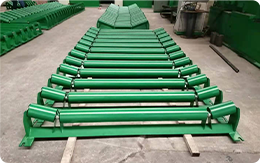 Afrikaans
Afrikaans  Albanian
Albanian  Amharic
Amharic  Arabic
Arabic  Armenian
Armenian  Azerbaijani
Azerbaijani  Basque
Basque  Belarusian
Belarusian  Bengali
Bengali  Bosnian
Bosnian  Bulgarian
Bulgarian  Catalan
Catalan  Cebuano
Cebuano  Corsican
Corsican  Croatian
Croatian  Czech
Czech  Danish
Danish  Dutch
Dutch  English
English  Esperanto
Esperanto  Estonian
Estonian  Finnish
Finnish  French
French  Frisian
Frisian  Galician
Galician  Georgian
Georgian  German
German  Greek
Greek  Gujarati
Gujarati  Haitian Creole
Haitian Creole  hausa
hausa  hawaiian
hawaiian  Hebrew
Hebrew  Hindi
Hindi  Miao
Miao  Hungarian
Hungarian  Icelandic
Icelandic  igbo
igbo  Indonesian
Indonesian  irish
irish  Italian
Italian  Japanese
Japanese  Javanese
Javanese  Kannada
Kannada  kazakh
kazakh  Khmer
Khmer  Rwandese
Rwandese  Korean
Korean  Kurdish
Kurdish  Kyrgyz
Kyrgyz  Lao
Lao  Latin
Latin  Latvian
Latvian  Lithuanian
Lithuanian  Luxembourgish
Luxembourgish  Macedonian
Macedonian  Malgashi
Malgashi  Malay
Malay  Malayalam
Malayalam  Maltese
Maltese  Maori
Maori  Marathi
Marathi  Mongolian
Mongolian  Myanmar
Myanmar  Nepali
Nepali  Norwegian
Norwegian  Norwegian
Norwegian  Occitan
Occitan  Pashto
Pashto  Persian
Persian  Polish
Polish  Portuguese
Portuguese  Punjabi
Punjabi  Romanian
Romanian  Russian
Russian  Samoan
Samoan  Scottish Gaelic
Scottish Gaelic  Serbian
Serbian  Sesotho
Sesotho  Shona
Shona  Sindhi
Sindhi  Sinhala
Sinhala  Slovak
Slovak  Slovenian
Slovenian  Somali
Somali  Spanish
Spanish  Sundanese
Sundanese  Swahili
Swahili  Swedish
Swedish  Tagalog
Tagalog  Tajik
Tajik  Tamil
Tamil  Tatar
Tatar  Telugu
Telugu  Thai
Thai  Turkish
Turkish  Turkmen
Turkmen  Ukrainian
Ukrainian  Urdu
Urdu  Uighur
Uighur  Uzbek
Uzbek  Vietnamese
Vietnamese  Welsh
Welsh  Bantu
Bantu  Yiddish
Yiddish  Yoruba
Yoruba  Zulu
Zulu Head Pulley - Essential Components for Belt Conveyor Systems
Understanding Head Pulleys Importance and Applications
Head pulleys, also known as head rollers, are critical components in various conveyor systems used across multiple industries, including mining, agriculture, and manufacturing. These pulleys play a significant role in the efficient operation of belt conveyors, where they serve to transmit power, redirect the belt, and maintain the system's overall efficiency. In this article, we will explore the functionality, design, and significance of head pulleys.
Functionality
The primary function of a head pulley is to drive the conveyor belt, allowing materials to be transported from one location to another. Situated at the end of the conveyor loop, the head pulley is equipped with a motor that provides the necessary force to move the belt. As the motor rotates the pulley, the belt moves in the desired direction, carrying the load with it. Additionally, head pulleys are essential for maintaining belt tension, which is crucial for preventing sagging and ensuring smooth operation.
Head pulleys typically feature a textured surface or a coating designed to enhance friction between the pulley and the belt. This increased friction is vital for effective power transmission, as it prevents the belt from slipping during operation. Moreover, head pulleys may be designed to include various features, such as crowned or flat shapes, depending on specific application requirements.
Design Considerations
The design of head pulleys can vary significantly based on their intended applications
. Factors such as load capacity, belt width, and environmental conditions play important roles in determining the appropriate design. For instance, head pulleys used in mining applications may require robust construction materials to withstand heavy loads, while those used in food processing may need to adhere to strict hygiene standards.head pulley

Additionally, the alignment of the head pulley is crucial for ensuring optimal belt tracking and reducing wear on both the pulley and the belt. Proper alignment not only enhances the lifespan of the conveyor system but also minimizes the risk of operational issues, such as belt misalignment or premature wear.
Applications
Head pulleys find their applications in a wide array of industries. In the mining sector, they are used for the transportation of minerals, ores, and other materials from excavation sites to processing facilities. In agriculture, head pulleys assist in the movement of grains, fertilizers, and other bulk materials. Furthermore, manufacturing facilities utilize head pulleys in assembly lines, where efficient material handling is essential for maintaining productivity.
In addition to standard applications, head pulleys can also be customized for specialized uses, such as magnetic separation in recycling operations or the incorporation of additional features to facilitate the unloading of materials.
Conclusion
In summary, head pulleys are indispensable components of conveyor systems, serving multiple roles in driving and supporting the belt. Their design, functionality, and applicability make them vital to ensuring the efficiency and effectiveness of material handling operations across various industries. As industries continue to evolve, the development and innovation in head pulley technology are likely to enhance their performance, contributing to the ever-increasing demand for efficient transportation solutions. Understanding and implementing the right head pulley for specific applications can lead to significant improvements in operational productivity and reliability.
-
Taper Centering Idler Set for Conveyor SystemsNewsJun.25,2025
-
Small Idler Rollers for Industrial ConveyorsNewsJun.25,2025
-
Guide Training Idler Set for Conveyor MaintenanceNewsJun.25,2025
-
Friction Offset Idler Set for Industrial UseNewsJun.25,2025
-
Double-Center-Roller Idler AlignmentNewsJun.25,2025
-
Channel Inset Impact Troughing Idler Set for Heavy LoadsNewsJun.25,2025





























